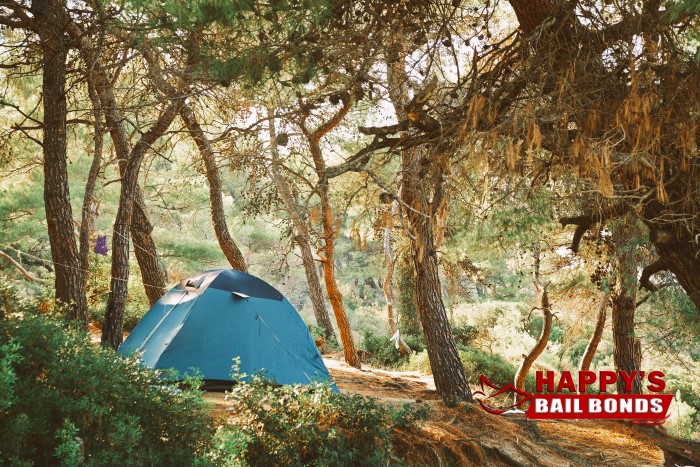
13 Jul Tips for Staying Safe While Camping

Camping is a great way to enjoy both the fantastic summer weather and breathtaking beauty California has to offer. The great thing about camping is that it’s also affordable and usually something you can do at the spur of the moment.
The key to getting the maximum amount of enjoyment out of your camping adventure is making sure you are safety conscious the entire time you’re camping.
Be Knowledgeable About Basic First Aid
It doesn’t matter how careful you are, accidents do happen and anytime there’s an accident, there’s a risk of an injury. Before you embark on a camping adventure, set aside some time to acquaint yourself with basic first aid. Make sure you know how to tie a tourniquet to slow bleed, how to apply a pressure bandage, and how to manage a sprain.
While you’re learning how to treat common camping injuries, you should also learn how to identify and manage things like allergic reactions, head injuries, hypothermia, and heatstroke.
Knowing how to deal with a camping health crisis is great, but all that knowledge won’t do you any good if you don’t have the right supplies with you. Put together a first aid kit that has everything needed to deal with common camping injuries and make sure you have the kit with you at all times. Never go on a hike or boating adventure without your first aid kit.
Research the Area Where You’ll be Camping
Once you know where you’re going camping, take some time to familiarize yourself with the camping area. Know what dangers are in the area and learn the steps you can take to protect yourself. Most parks will let you know if there are plants, animals, and particular parts of the park you should avoid. If you learn that the park has bears, raccoons, and other forms of wildlife that have gotten comfortable with campers, take some time to make sure you have equipment that will protect your camping gear from these animals. You should also memorize the steps you should take if you find yourself in a face-to-face encounter with wildlife.
Pack a Dangerous Plants Book in Your Kit
You should always have a book that helps you identify dangerous plants that are native to the area where you’re camping. This book will not only help you identify which plants you shouldn’t touch but will also provide useful tips about what you should do if you accidentally brush against one. Knowing what types of dangerous plants are native to your campsite helps you determine what salves and lotions you should include in your first aid kit.
Make Sure you’re Equipment is in Good Repair
Before leaving on your camping trip, look over your equipment and make sure it’s in good repair. Having equipment that is in perfect working order not only makes your camping experience safer but also increases how much you enjoy your adventure.
Check-in With a Loved One
Always let someone know what your camping itinerary is and schedule regular check-ins. While this might seem like an inconvenience, knowing where to start searching for you if you don’t check-in can be a lifesaver if you fall and injure yourself so badly you can’t return to your campsite.

Sorry, the comment form is closed at this time.